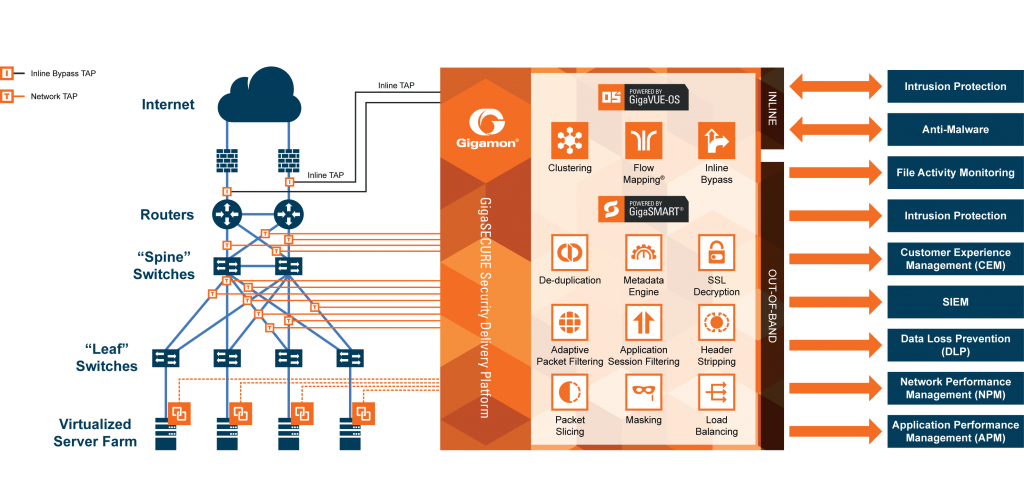The Best Technology I Never Knew I Needed
Updated October 28, 2021.
In my role as a Gigamon Systems Engineer, one of my main responsibilities is being a technology evangelist. Most customers understand what a router or switch does for their business—these products have been around a long time and are a common component of most IT infrastructures—and many customers also have a good understanding of network management and security tools. However, when it comes to Gigamon, I often need to explain the problem we seek to solve before I can begin to explain the products we sell.
When I started at Gigamon two years ago, I was talking to one of my new customers about his experience with our products and he told me that a Traffic Visibility Fabric (TVF) was the best technology he had no idea he needed to have. But this customer, who has a suite of tools from Riverbed that provide him vital information about the health and performance of his network, now relies on Gigamon’s Traffic Visibility Fabric to provide the “foundation” his performance tools need to deliver the visibility that keeps his network running in tip-top shape.
In my previous article, “The Changing Face of Network Management,” I laid out the case for monitoring your network for Fault, Configuration, Accounting, Performance, and Security. I also wrote about the significant evolution of network management over the past several years. Today, I’ll delve deeper into the components that make up a Traffic Visibility Fabric and introduce the four functions that are common to a Traffic Visibility Fabric.
Packets Don’t Lie
Gigamon was founded more than a decade ago by a group of people from the packet-sniffing world. Packet analysis tools such as Wireshark seek to provide network troubleshooters with visibility into data passing through the network. Packets don’t lie, so when troubleshooting a network problem, it is very helpful to view the actual packets passing through the devices that make up the network.
The problem today, however, is that there are so many packets traversing the network that it is difficult to manually sift through the immense volume of data to find what you are looking for and, in many cases, there may be more data than a network interface on a packet analysis tool can process at one time.
Luckily, there are many tools available that can analyze these packets to provide insight into Network Performance, Application Performance, and the Security of the network. The challenge is providing these tools the packet data they need and provide a complete picture of your computing environment.
The Traffic Visibility Fabric – Your Tools on Steroids
I work with many clients in all industries from healthcare to the energy sector to financial services. While each may have different business goals, they all want to know what is going on in their network—and the deployment of a Traffic Visibility Platform helps them achieve this objective. For some, the desire to have a computing environment within minimal downtime and predictable performance is a top goal; for others, it’s the security of their corporate intellectual property or the protection of employees from malware. For each business objective, there is the Gigamon TVF and a Gigamon ecosystem partner who addresses it.
The Gigamon Traffic Visibility Fabric is comprised of various hardware and software components that collect packets from the network. It has the ability to filter those packet streams, modify them to clean up the packets, or change them to suit the tools to which those streams are sent. At a high level, a Traffic Visibility Fabric performs four tasks:
- Collects packet data (Aggregation)
- Selects the important data for a given application (Filter)
- Transforms the data stream (Clean Up)
- Delivers the packet data to the tools (Replicate/Deliver – Load Balancing)
Through these four major functions, the Gigamon Traffic Visibility Fabric provides a new level of access and flexibility not previously available with device-based network management. Over the next few weeks, we will explore each of these four tasks in depth.
Who Needs Glamour?
In addition to better visibility into the computing environment, a TVF also enables the easy addition of new tools to address new analysis needs. The tools simply plug into the TVF and have existing traffic streams directed to them. This task takes only a few minutes and does not impact the production computing environment.
The deployment of Traffic Visibility Fabrics has profoundly changed the way IT and cybersecurity departments approach managing their computing environment and deploying new tools. And it’s led to a more secure, high-performance, and stable computing infrastructure.










